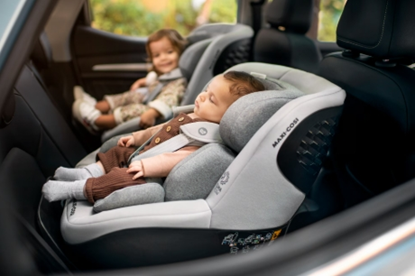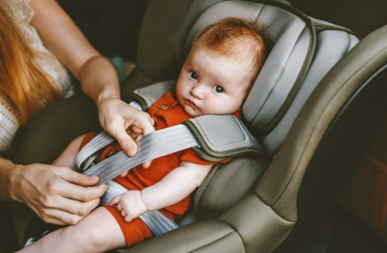Huawei
Time: globisoftware
On: Feb/16/2025
Category: Huawei iphone samsung Digital life
Car seat safety is a critical part of parenting that every new caregiver should understand. Knowing the right time to transition your baby from a rear-facing to a forward-facing car seat can have a major impact on your child’s safety during travel. When can babies face forward in a car seat is an important question many parents ask. Proper installation is crucial to ensuring that your baby remains secure while driving. This guide will help you understand the importance of rear-facing seats, the benefits they offer for your baby’s development, and when it’s safe to make the switch. By the end, you will be well-equipped with expert tips on installation, safety checks, and making the right decision on when to face your baby forward in the car.

Importance of Rear-Facing Car Seats for Infants
Rear-facing car seats are critical for ensuring maximum safety for infants, whose neck and spine are still in the process of developing. During a collision, these seats help to evenly distribute the impact forces across the child’s body, significantly lowering the risk of harm. Since the head, neck, and spine are particularly susceptible in young children, rear-facing seats offer additional protection to these vulnerable areas. Child safety experts, including those from the American Academy of Pediatrics, strongly advise keeping babies in rear-facing seats for as long as possible, ideally until the child exceeds the height or weight limits specified by the car seat manufacturer.
Benefits of Rear-Facing Seats Over Forward-Facing
The rear-facing position provides numerous benefits over forward-facing seats, particularly for young children. This position offers superior support for the baby’s head, neck, and spine, ensuring that the infant’s body is protected during a collision. Research indicates that children in rear-facing seats are much less likely to experience serious injuries in the event of a crash than those in forward-facing seats. Additionally, rear-facing seats provide better posture and comfort, which can help reduce the risk of suffocation, especially for babies with underdeveloped airways. By keeping your baby in a rear-facing seat as long as possible, you are maximizing their safety during car travel.
Guidelines: When Can Babies Face Forward in a Car Seat?
What Are the Age and Weight Recommendations?
Experts recommend waiting until your baby is at least two years old before transitioning them to a forward-facing car seat. Additionally, they should not exceed the maximum weight or height limits of the rear-facing seat, as specified by the manufacturer. The American Academy of Pediatrics emphasizes that rear-facing seats offer the best protection for children under two and that the child should remain in a rear-facing seat until reaching these limits, regardless of age. Always check the guidelines provided by your car seat manufacturer to ensure that you’re transitioning your child safely.
Expert Advice on Forward-Facing Seats
Many experts, including pediatricians and child safety advocates, advise parents to keep their child in a rear-facing car seat for as long as possible, as this offers the best protection. Dr. Benjamin Hoffman, a noted child safety expert, emphasizes the importance of not rushing the transition to a forward-facing seat. He recommends parents pay close attention to the specific weight and height limits set by the manufacturer and only switch when necessary. Additionally, ensure that the seat is properly installed by carefully following the car seat’s user manual and re-checking the seat’s installation after each use.

How to Know When Your Baby Is Ready to Face Forward
There are a few key indicators that will tell you when your baby is ready to face forward. One of the first signs is when your baby’s head reaches within one inch of the top of the rear-facing seat. Additionally, if your baby has surpassed the weight or height limits of the rear-facing seat, it’s time to consider making the switch. Be sure to track your baby’s growth and consult your pediatrician if you are unsure whether your child is ready for a forward-facing seat. This careful observation will ensure that your child’s safety is not compromised.
Car Seat Installation Tips for Forward-Facing Safety
Proper installation of a forward-facing car seat is just as important as transitioning your child to one. Start by placing the seat securely in the back seat of your car. Ensure that the tether strap is attached to the vehicle’s anchor point to reduce any movement during a crash. The seat belt or LATCH system should be tightened properly so that the car seat does not move more than an inch in any direction. Take the time to double-check the seat’s installation each time you use it to ensure that it remains securely fastened. Regularly inspecting the car seat’s installation will help maintain the highest level of safety for your child.
What to Do if Your Baby Outgrows the Rear-Facing Seat
If your baby outgrows their rear-facing car seat before reaching the recommended age or weight, consider investing in a convertible car seat. Convertible seats can be used both rear-facing and forward-facing, giving you the flexibility to switch the seat as your baby grows. Keep your baby in the rear-facing position as long as the seat allows, and only transition to forward-facing once the maximum weight or height is reached. Convertible seats provide an excellent long-term solution, offering both rear- and forward-facing capabilities as your child continues to grow.
Conclusion
Understanding when to transition your baby to a forward-facing car seat is crucial for their safety during travel. Always take into account the age, weight, and height guidelines provided by the car seat manufacturer, and make the switch only when necessary. When can babies face forward in a car seat is a decision that depends on multiple factors, including your baby’s growth. Rear-facing seats offer critical protection for your baby, and proper installation ensures that your child is securely fastened and ready for safe travel. By following expert advice and exercising caution, you can confidently ensure that your child is safe, comfortable, and well-protected on every journey.
FAQ
Can I turn my baby forward-facing at one year old?
While you can legally switch your baby to a forward-facing seat at one-year-old in some regions, experts recommend continuing to use a rear-facing seat until at least age two or until they reach the manufacturer’s weight or height limit.
How do I know if my baby is safe in a forward-facing seat?
Ensure the forward-facing seat is installed correctly using the seat belt or LATCH system, and that it’s tightly secured. Always use the tether strap and follow the manufacturer’s instructions. Regularly verify that the harness fits snugly.
Are there any risks associated with forward-facing car seats?
Forward-facing seats provide less neck and spine protection compared to rear-facing seats. Switching too early increases the risk of injury in a crash. Always follow expert and manufacturer guidelines to ensure your baby’s safety.
